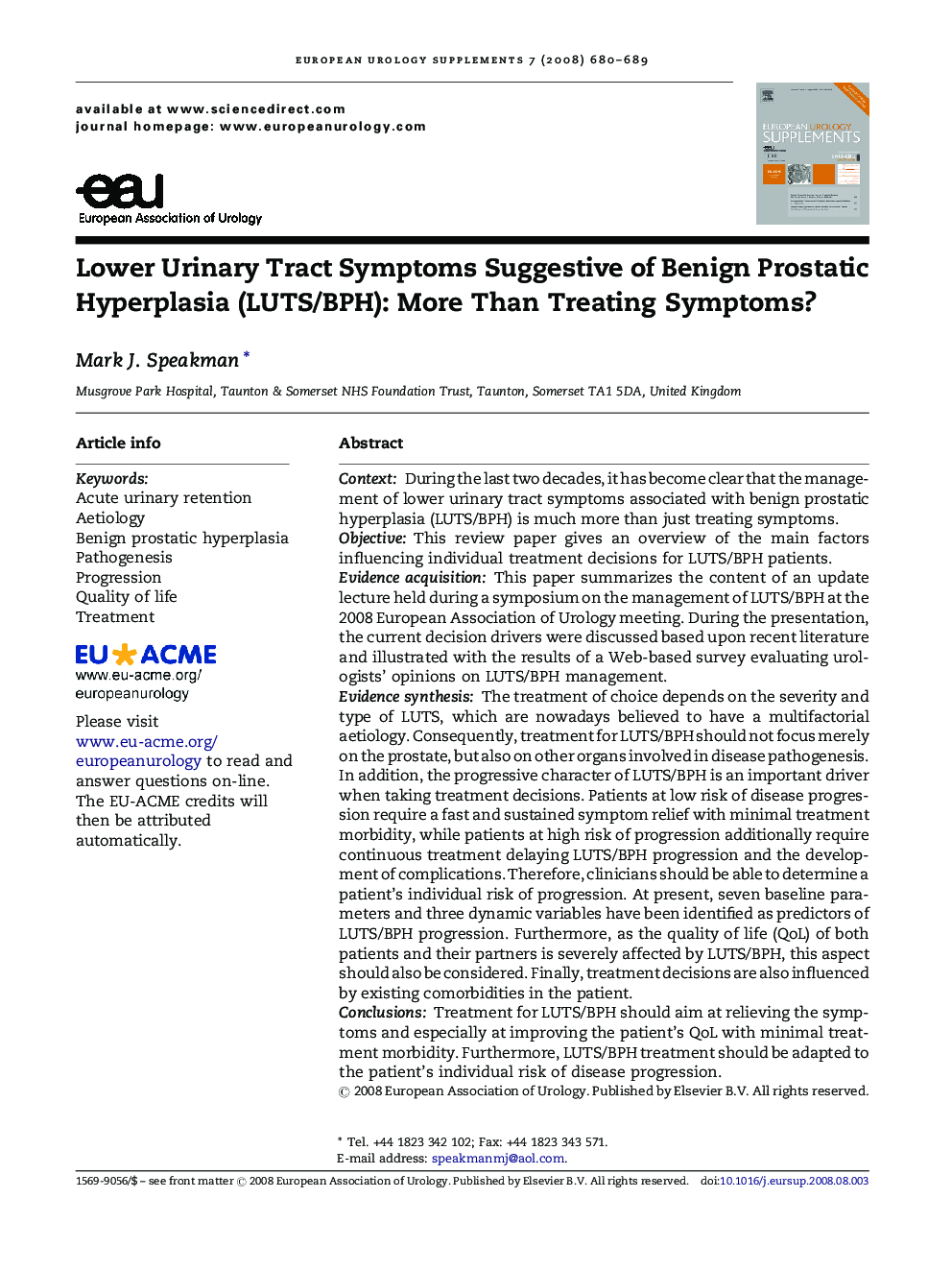| Article ID | Journal | Published Year | Pages | File Type |
|---|---|---|---|---|
| 3934053 | European Urology Supplements | 2008 | 10 Pages |
ContextDuring the last two decades, it has become clear that the management of lower urinary tract symptoms associated with benign prostatic hyperplasia (LUTS/BPH) is much more than just treating symptoms.ObjectiveThis review paper gives an overview of the main factors influencing individual treatment decisions for LUTS/BPH patients.Evidence acquisitionThis paper summarizes the content of an update lecture held during a symposium on the management of LUTS/BPH at the 2008 European Association of Urology meeting. During the presentation, the current decision drivers were discussed based upon recent literature and illustrated with the results of a Web-based survey evaluating urologists’ opinions on LUTS/BPH management.Evidence synthesisThe treatment of choice depends on the severity and type of LUTS, which are nowadays believed to have a multifactorial aetiology. Consequently, treatment for LUTS/BPH should not focus merely on the prostate, but also on other organs involved in disease pathogenesis. In addition, the progressive character of LUTS/BPH is an important driver when taking treatment decisions. Patients at low risk of disease progression require a fast and sustained symptom relief with minimal treatment morbidity, while patients at high risk of progression additionally require continuous treatment delaying LUTS/BPH progression and the development of complications. Therefore, clinicians should be able to determine a patient's individual risk of progression. At present, seven baseline parameters and three dynamic variables have been identified as predictors of LUTS/BPH progression. Furthermore, as the quality of life (QoL) of both patients and their partners is severely affected by LUTS/BPH, this aspect should also be considered. Finally, treatment decisions are also influenced by existing comorbidities in the patient.ConclusionsTreatment for LUTS/BPH should aim at relieving the symptoms and especially at improving the patient's QoL with minimal treatment morbidity. Furthermore, LUTS/BPH treatment should be adapted to the patient's individual risk of disease progression.
